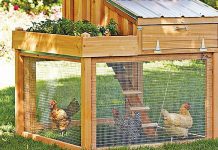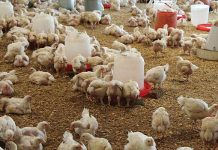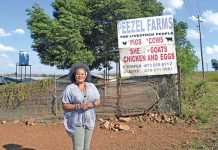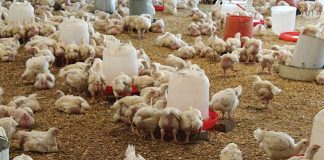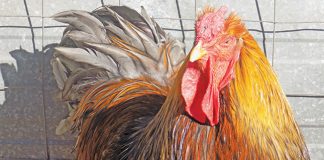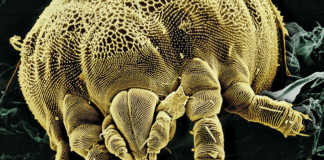
Photo: Jura Varga
The term ‘small-scale poultry farmer’ covers micro-, small- and medium-sized broiler and egg production units. The South African Poultry Association classifies a small-scale broiler unit as one that delivers fewer than 4 000 birds per cycle.
In contrast, small-scale egg production, according to South African agriculturalist Dr Gavin MacGregor, can start with nine point-of-lay pullets. Many semi-intensive free-range poultry operations are also classified as small-scale.
If your enterprise falls into one of these categories, you’re more likely to be working with your local state veterinarian or animal health technician than a private practitioner. Veterinarians have an in-depth understanding of the chemistry, usage, dosage and withdrawal times of scheduled medications. It’s therefore advisable to include them in the planning of a first-aid kit for your animals.
Planning
The nature of your enterprise and the likelihood of specific diseases occurring will dictate what you include in your first-aid kit.
For example, the withdrawal time for certain antibiotics is far longer for eggs than it is for poultry meat, and discarding eggs intended for human consumption is not financially viable. Conversely, a few decorative roosters, hens and chicks around a farmyard restaurant are likely to be around until they die of old age, so they can be given as many antibiotics as they require!
Planning a first-aid kit should also include a decision on whom should have access to it. Training is essential, too, as most poultry medications come with detailed instructions and must be administered at specific dilutions.
Next, you need to consider the diseases, conditions or injuries that are likely to affect your birds. With most poultry diseases, prevention is better than cure, and management is a crucial part of prevention.
In many cases, humane euthanasia is a more practical approach to maintaining the welfare of small-scale commercial poultry farms, as the treatment of individual birds may not be affordable or even feasible.
Components of a first-aid kit
Firstly, you will need a large plastic box for vaccines and any other routine or emergency medications that need to be refrigerated. Secondly, a portable chiller bag is necessary for transporting medications that must be kept cool and dry.
These include eye ointments, wound sprays, iodine and gentian violet, Vaseline, homeopathic drops, probiotics, rehydration fluids, supplements and scheduled medications to be added to feed or water.
A third container should hold wipes or swabs, soap, disposable towels, hand and boot disinfectants, instruments, gloves and sampling bottles. Include 1ml and 3ml syringes, as well as 23 gauge needles in case you need to inject a fowl. The intramuscular injection site in a fowl is the large muscle found on each side of the breastbone.
Include a few bin-liner-type plastic bags in your kit so that you can collect one or more dead fowls for autopsy. You can also keep a few plastic freezer bags in your deep freeze to keep the carcasses cool.
Wound treatment
Injuries can be caused by rat bites and predation by dogs or jackals. However, the most common injuries are caused by bird-on-bird pecking. Injured birds need to be moved to a separate cage and sometimes kept individually, as they will also peck each other. It is absolutely essential to find the cause.
An epidemic of peck injuries is usually brought on by imbalanced feed or too few feeding stations. The major deficiency in breeding hens and high-production layers that leads to pecking is a lack of calcium. Generally, diatomaceous earth added to backyard and small-scale layer rations offers calcium in a more natural form and reduces pecking.
Roosters sometimes fight each other when they run with hens, although this is less common in modern poultry breeds.
Once an injured bird is removed, wrap it gently in a blanket and clean its wounds well with saline (see table). Feathers can be plucked away to show the edges of the wound, and irradiated honey or pure cane sugar granules can be put in to stop the bleeding.
Once the bleeding has abated, examine the bird well and decide whether you want to euthanise it. If it is humanely slaughtered at this point, it can be boiled up as dog food, as it did not receive antibiotics. If you decide to treat it further, it must be kept in a cage until healed.
Small peck marks can be treated with a cotton bud dipped in gentian violet. Large wounds can be rinsed off with saline after sugar is applied, as this will remove any dirt. They can then be sprinkled lightly with a tetracycline eye powder. The wounds will heal quickly if cleaned daily with saline and treated with honey and a bit of antibiotic powder.
If you take the bird to a vet, he or she may decide to inject an antibiotic instead, and it’s possible to stitch a large wound in a fowl after local or general anaesthetic. Again, the bird must be caged separately until it has recuperated. Move the cage into the flock once the bird has healed so that it can safely interact with the others for a few days, before being released.
Leg fractures are not uncommon in roosters and can heal well. Clean and treat any open wound, as described above, dress the wound, bandage the leg and then splint it.
Vaccination is best
There are two reasons to vaccinate your poultry: firstly, when an outbreak takes place, the whole flock needs to be treated; and secondly, the most serious avian diseases are caused by viruses for which there is no treatment.
For small-scale intensive broiler production where good biosecurity is practised, vaccination against Newcastle disease in the first week of life is often all that’s needed. However, for household poultry, pet poultry and layers, the vaccination regime must, at the very least, cover Newcastle disease, Marek’s disease, coryza and infectious bronchitis.
Avian influenza is a controlled disease and there is always a risk if poultry are exposed to wild birds. However, in my experience, backyard fowls seem to be more resistant than commercial poultry to avian influenza and appear to be relatively unaffected in areas where there are severe outbreaks in commercial poultry.
However, if you do have a sudden and severe loss of chickens, please notify your local animal health officer or state veterinarian urgently.
Infectious and contagious diseases
Several of the infectious and contagious diseases of poultry are on the list of controlled diseases published on the Department of Agriculture, Land Reform and Rural Development’s website. These include bird flu, Newcastle disease and salmonellosis. You are legally obliged to notify your nearest state veterinary office if there’s an outbreak of such a disease on your farm.
The best way to prevent and control infectious diseases is by having good on-farm biosecurity measures, and providing your chickens with balanced rations, sufficient clean water, and shelter and protection from severe temperatures.
Often, the first time an owner notices the disease is when the number of dead chickens starts to rise. Your vet can perform a necropsy on a freshly dead bird. Put it in a plastic bag and keep it cool with ice packs until you can get it to the vet. You’ll receive a rapid diagnosis and advice on how to treat the rest of your flock. Both private and state vets can refer you to a poultry expert if needed.



